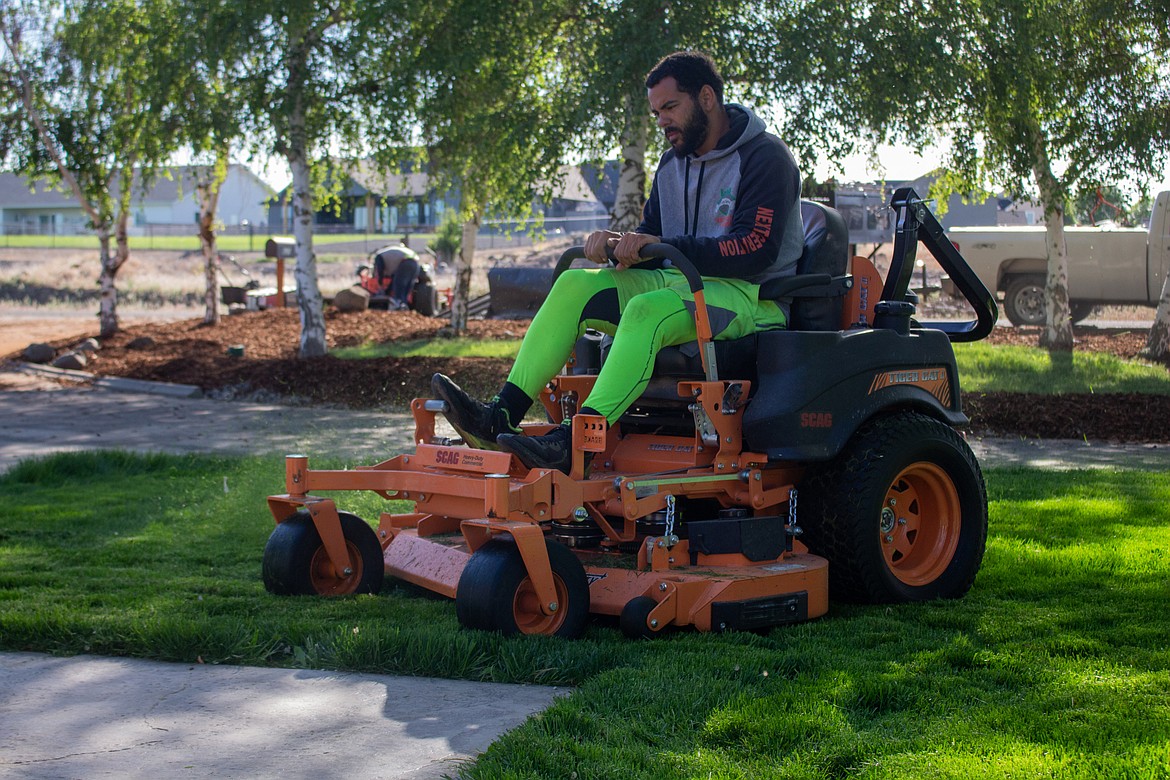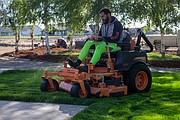Green lawn; happy lawn: Keep your yard looking fresh all season with these tips
CASEY MCCARTHY | Hagadone News Network | UPDATED 4 years, 7 months AGO
Keeping the yard and lawn looking fresh and green from spring to fall can be a challenge in the desert climate of the Columbia Basin, but that doesn’t mean it’s not doable.
Bob Tatum, owner of Tatum Lawn Care in Moses Lake, discussed some of the main issues people face in keeping their yard healthy and green all season.
It probably comes with little surprise that watering issues are the main concern Tatum sees with yards in the area, in addition to not keeping the yard properly fertilized.
As the weather warms up this spring, he said it’s important to make sure to water the lawn more often. While once a week early on in the spring is probably sufficient, as temperatures head into the 80s you may need to bump that up to three or four times a week.
“If you start seeing a dry area here and there, that’s typically an indication that there’s something going on with your sprinkler system,” Tatum said. “Is it, A, a sprinkler not working properly or B, is your sprinkler system not designed properly?”
Often, he said he’ll have customers, who are adamant the dry areas in their yard are getting water, find out certain areas aren’t getting enough water in the soil.
He said something you can do to test this is to place coffee cans or tuna cans in zones of the yard with both dry areas and green areas and see just how much water is collecting when the system is running.
“You don’t want to do any seeding until you’ve figured out if the sprinkler system or water isn’t the issue,” Tatum said. “If you don’t know you’re going to be able to water it correctly, you’re just going to be in the same boat.”
For homeowners who recently laid out fresh sod or have a brand-new yard, Tatum suggests watering that grass three times a day at least until it roots. From there, he said a person can just continue watering normally. He said it’s important to keep up with a steady watering schedule, not taking days off, as this might cause the seeds to dry up and not be able to germinate.
If someone decides to place some seed in a bare area of their yard, bluegrass and perennial ryegrass tend to be the most popular choices in this area.
“It’s always good to use a mix of the perennial ryegrass because it comes up a little faster. Bluegrass comes up very slow,” Tatum said. “People can get discouraged when they put down bluegrass because it does come up so slow.”
With a mix of the two, he suggests a layer of peat moss to help keep the moisture in the soil for freshly laid seed.
As the weather warms up more, Tatum also said a great way to keep the lawn healthy and green is to cut the lawn just a hair taller to leave plenty of cover for the crown of the grass. If the yard is cut too short, that can burn the crown.
Keeping a thick, healthy lawn is also a great way to keep weeds out of the yard.
“If you’ve got the lawn a little taller, well-fertilized, well-watered, you will get less weeds growing because weeds don’t like competition,” Tatum said. “If they don’t have competition, they will grow.”
A thicker, healthier lawn is going to take less water and less fertilizer to maintain, he said. For people who might already have an issue with weeds in their yard, Tatum said it’s difficult to deter them without at least coming in once to spray them with weed killer.
Spraying for weeds in the spring can also help deter some of the summer weeds, like crabgrass and clover. Tatum said fall is another time weeds like to come back.
Tatum said there are some organic products on the market that can help keep weeds at bay for people who might look to avoid any chemicals in their lawn. He said a healthy use of organic fertilizer can be beneficial to a lawn, as well as increase growth and sustainability.
ARTICLES BY CASEY MCCARTHY

Keep it flowing: Protecting your plumbing when the weather gets cold
As the freezing temperatures roll in, it’s a good time to make sure the pipes and faucets of a home are properly protected from winter frost.

Pumping out pumpkins: Growing your own gourds for Halloween
ROYAL CITY — With October here, Halloween is fast approaching. While it’s a little late to start a pumpkin crop this season for jack-o’-lanterns ready, it’s not too early to start a crop for next season.

Fresh flow: Ventilation is important for homes, utility units
MOSES LAKE — Ensuring heating, ventilation and air condition (HVAC) units are free of dust and buildup can make a big difference in the quality of air inside a home.





